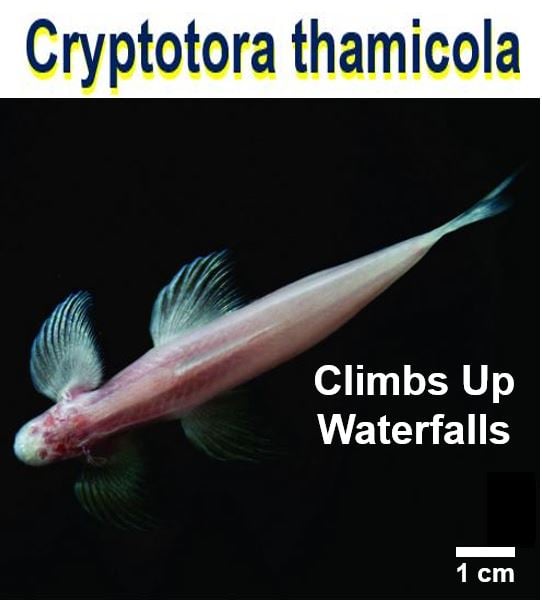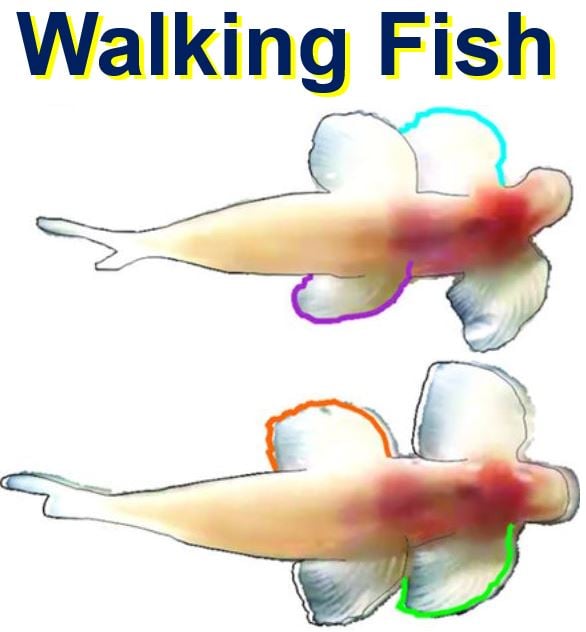A species of blind cavefish (Cryptotora thamicola) in Thailand that was discovered walking up waterfalls just like a lizard, will give us a better understanding of how species adapted anatomically during the evolutionary need to walk on land, say scientists from the New Jersey Institute of Technology (NJIT).
The NJIT scientists, led by Brooke Flammang, explained in the prestigious journal Nature Scientific Reports (citation below) that the cavefish’s ability to walk and climb is comparable to how tetrapods – four-footed mammals and amphibians – get around on land.
 Dorsal view of a species of blind cavefish – Cryptotora thamicola – resting on the bottom of a glass tank. (Image: nature.com)
Dorsal view of a species of blind cavefish – Cryptotora thamicola – resting on the bottom of a glass tank. (Image: nature.com)
Cavefish’s ability unique
There are other species of fish that use their fins to ‘walk’ along the sea bed, usually with a basic hopping movement. This cavefish, however, is quite different, because it can climb steep rock faces covered by fast-moving water – waterfalls – using its fins. It moves around on dry surfaces with the agility of a salamander.
The discovery of this remarkable capability, never seen in other living fishes, also has implications for understanding how the bodies of all species evolved after the transition from finned to limbed appendages in the Devonian period, which started about 420 million years ago.
Video footage of the fish (below) shows its unique movement as it twists its body from side-to-side and uses its front and back fins to take steps up the face of a waterfall. Most lay people would think it was a lizard rather than a fish.
 Stance phase averaged by proportion of step cycle for right forefin (RF, blue), left forefin (LF, green), right hindfin (RH, orange), and left hindfin (LH, purple). (Image: nature.com)
Stance phase averaged by proportion of step cycle for right forefin (RF, blue), left forefin (LF, green), right hindfin (RH, orange), and left hindfin (LH, purple). (Image: nature.com)
Flammang said regarding Cryptotora thamicola:
“It possesses morphological features that have previously only been attributed to tetrapods. The pelvis and vertebral column of this fish allow it to support its body weight against gravity and provide large sites for muscle attachment for walking.”
“This research gives us insight into the plasticity of the fish body plan and the convergent morphological features that were seen in the evolution of tetrapods.”
In an Abstract in the journal, the authors wrote:
“These findings are significant because they represent the first example of behavioural and morphological adaptation in an extant fish that converges on the tetrapodal walking behaviour and morphology.”
Citation: “Tetrapod-like pelvic girdle in a walking cavefish,” Brooke E. Flammang, Apinun Suvarnaraksha, Julie Markiewicz & Daphne Soares. Nature Scientific Reports 6, Article number: 23711 (2016). 24 March 2016. DOI: 10.1038/srep23711.
Video – Blind cavefish that climbs waterfalls
NJIT Researchers Make a Major Cavefish Discovery in Thailand.
